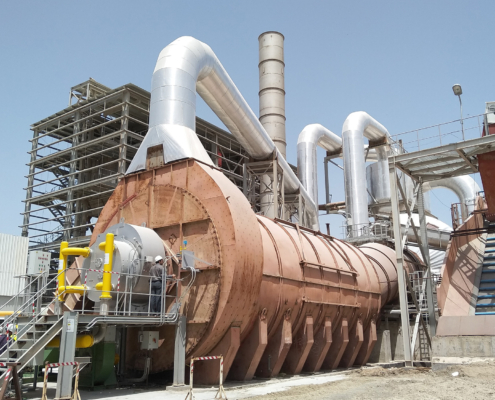 https://pioneerair.com/wp-content/uploads/2024/03/Professional-inspecting-industrial-gas-system.jpg
1250
2000
Abstrakt Marketing
/wp-content/uploads/2022/05/pioneer_air_systems_logo.png
Abstrakt Marketing2024-03-04 14:44:192025-12-06 20:30:27Maintenance 101: Keeping Your Gas Hydrogen Dryer System in Peak Condition
https://pioneerair.com/wp-content/uploads/2024/03/Professional-inspecting-industrial-gas-system.jpg
1250
2000
Abstrakt Marketing
/wp-content/uploads/2022/05/pioneer_air_systems_logo.png
Abstrakt Marketing2024-03-04 14:44:192025-12-06 20:30:27Maintenance 101: Keeping Your Gas Hydrogen Dryer System in Peak ConditionMaintenance 101: Keeping Your Gas Hydrogen Dryer System in Peak Condition
Maintaining a hydrogen gas dryer system is not just a routine task; it’s a crucial practice that directly impacts efficiency, longevity, and reliability. Gas hydrogen dryers play a pivotal role in various industrial processes, and ensuring their peak condition is essential for uninterrupted operations.
In this comprehensive guide, we’ll delve into the importance of regular maintenance, break down key components, help you create a maintenance schedule, offer troubleshooting guidance, emphasize safety protocols, and provide cost-effective tips to keep your gas hydrogen dryer system in optimal condition.
Efficiency Boost
Regular maintenance is the lifeblood of any gas hydrogen dryer system. These systems work tirelessly to eliminate moisture from hydrogen gas, preventing corrosion and ensuring the quality of the end product. With routine maintenance, you can optimize the system’s performance, leading to increased efficiency. Clean filters, well-lubricated components, and calibrated sensors contribute to the overall effectiveness of the dryer.
Longevity and Reliability
A well-maintained hydrogen gas dryer system is a durable one. Components subjected to regular wear and tear can be identified and replaced before they fail, extending the system’s overall lifespan. Regular maintenance also enhances reliability, minimizing the risk of unexpected breakdowns that can disrupt operations and incur costly downtime.
Identifying Key Components
Understanding the anatomy of your hydrogen dryer system is the first step toward effective maintenance. Let’s break down the key components that require attention:
Desiccant Beds
Desiccant beds are the heart of a hydrogen gas dryer system. Regularly inspect and replace the desiccant material to ensure optimal moisture removal.
Filters
Filters prevent contaminants from entering the system. Check and replace filters regularly to maintain efficient gas flow and protect downstream components.
Valves
Valves control the flow of hydrogen gas. Inspect for leaks, proper sealing, and smooth operation, addressing any issues promptly.
Heat Exchanger
The heat exchanger plays a critical role in the drying process. Clean the exchanger regularly to remove accumulated debris and optimize heat transfer.
Sensors and Controls
Calibrate sensors and controls to ensure accurate readings and seamless operation. Faulty sensors can lead to improper drying and potential damage.
Creating a Maintenance Schedule
A well-organized maintenance schedule is the cornerstone of an effective maintenance strategy. Here’s a guide to help you develop a comprehensive plan:
Daily Checks
- Check Pressure Levels: Ensure the hydrogen gas flows at the recommended pressure levels.
- Inspect for Leaks: Regularly inspect valves and connections for any signs of leaks.
Weekly Tasks
- Filter Inspection: Examine filters for clogs or damage, replacing them as needed.
- Visual Inspection: Look for any visible signs of wear, corrosion, or irregularities in the components.
Monthly Maintenance
- Desiccant Bed Inspection: Check the condition of desiccant beds, replacing or regenerating the desiccant material as necessary.
- Valve Lubrication: Lubricate valves to ensure smooth operation.
Quarterly Actions
- Heat Exchanger Cleaning: Conduct a thorough cleaning of the heat exchanger to remove accumulated dirt and debris.
- Sensor Calibration: Calibrate sensors and controls to maintain accurate readings.
Annual Overhaul
- Comprehensive System Check: Engage in a comprehensive inspection, including a detailed examination of all components, lubrication of moving parts, and replacement of worn-out parts.
Providing regular maintenance for your hydrogen dryer systemsis important, but that’s just the start. Learn more about our full-package of equipment and services for hydrogen gas dryers.
Troubleshooting Guide
No matter how well-maintained your hydrogen dryer system is, occasional issues may arise. Here’s a troubleshooting guide to help you identify and address common problems:
Insufficient Drying
Possible Causes:
- Worn-out desiccant beds
- Inadequate heat transfer
- Insufficient gas flow
Solution:
- Replace or regenerate desiccant beds
- Clean the heat exchanger
- Ensure proper pressure and flow rates
Pressure Fluctuations
Possible Causes:
- Valve issues
- Leaks in the system
- Regulator problems
Solution:
- Inspect and repair valves
- Identify and fix leaks
- Check and adjust regulators
Unusual Noises
Possible Causes:
- Loose or damaged components
- Inadequate lubrication
- Valve malfunctions
Solution:
- Tighten or replace loose components
- Lubricate moving parts
- Inspect and repair valves
Faulty Sensors
Possible Causes:
- Calibration issues
- Sensor damage or wear
Solution:
- Calibrate sensors
- Replace damaged sensors
Safety Protocols
Safety should always be a top priority during maintenance activities. Follow these safety protocols to ensure the well-being of personnel and the integrity of the system:
- Gas Shutdown: Before starting any maintenance, shut down the gas supply and depressurize the system.
- Personal Protective Equipment (PPE): Wear appropriate PPE, including gloves and safety glasses, to protect against potential hazards.
- Ventilation: Ensure proper ventilation to disperse any residual hydrogen gas during maintenance.
- Training: Only trained and authorized personnel should conduct maintenance activities.
- Emergency Procedures: Familiarize yourself with emergency shutdown procedures and have them clearly documented for quick reference.
Cost-Effective Tips
Maintaining your hydrogen dryer system doesn’t have to break the bank. Consider these cost-effective tips to maximize the value of your routine maintenance:
- Strategic Parts Sourcing: When sourcing replacement parts, explore different suppliers and negotiate for competitive prices. Consider aftermarket parts that meet industry standards and regulations while offering cost savings.
- Optimize Resource Usage: Use energy-efficient components and technologies to reduce operational costs. Optimize the use of utilities during maintenance, such as using compressed air judiciously for cleaning.
- In-House Training: Invest in training programs for your maintenance staff. Well-trained personnel can conduct routine tasks effectively, reducing the need for frequent outsourcing of maintenance services.
- Preventive Maintenance: Implementing a robust preventative maintenance program helps identify potential issues before they escalate, saving on repair costs and preventing unexpected downtime.
Partner With Pioneer Air Systems for Industry-Leading Hydrogen Dryer System Maintenance Today
At Pioneer Air Systems, we are your trusted source for gas hydrogen dryer system maintenance. Specializing in non-traditional equipment, our dedicated team ensures the longevity and efficiency of your systems. Count on us for comprehensive care, delivering expertise in maintaining your critical equipment so that you can confidently focus on your operations. Reach out to get started today.




